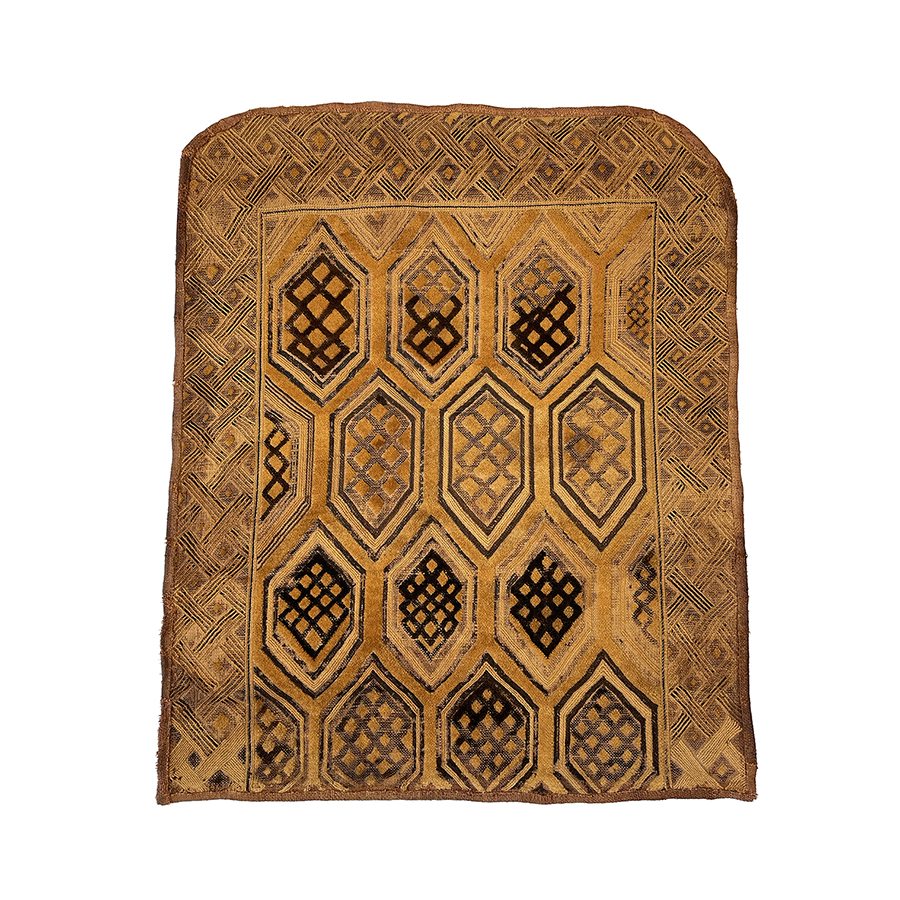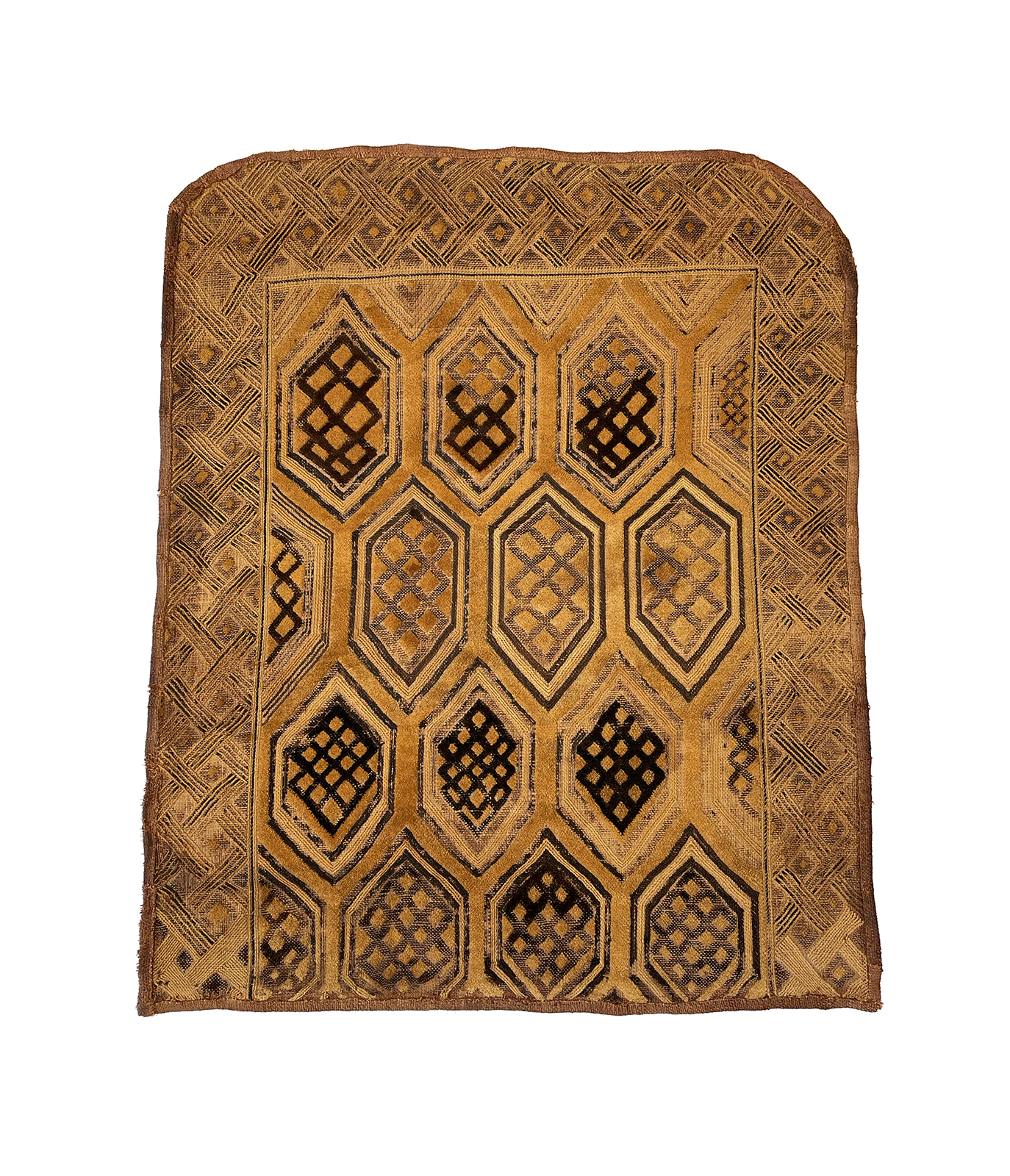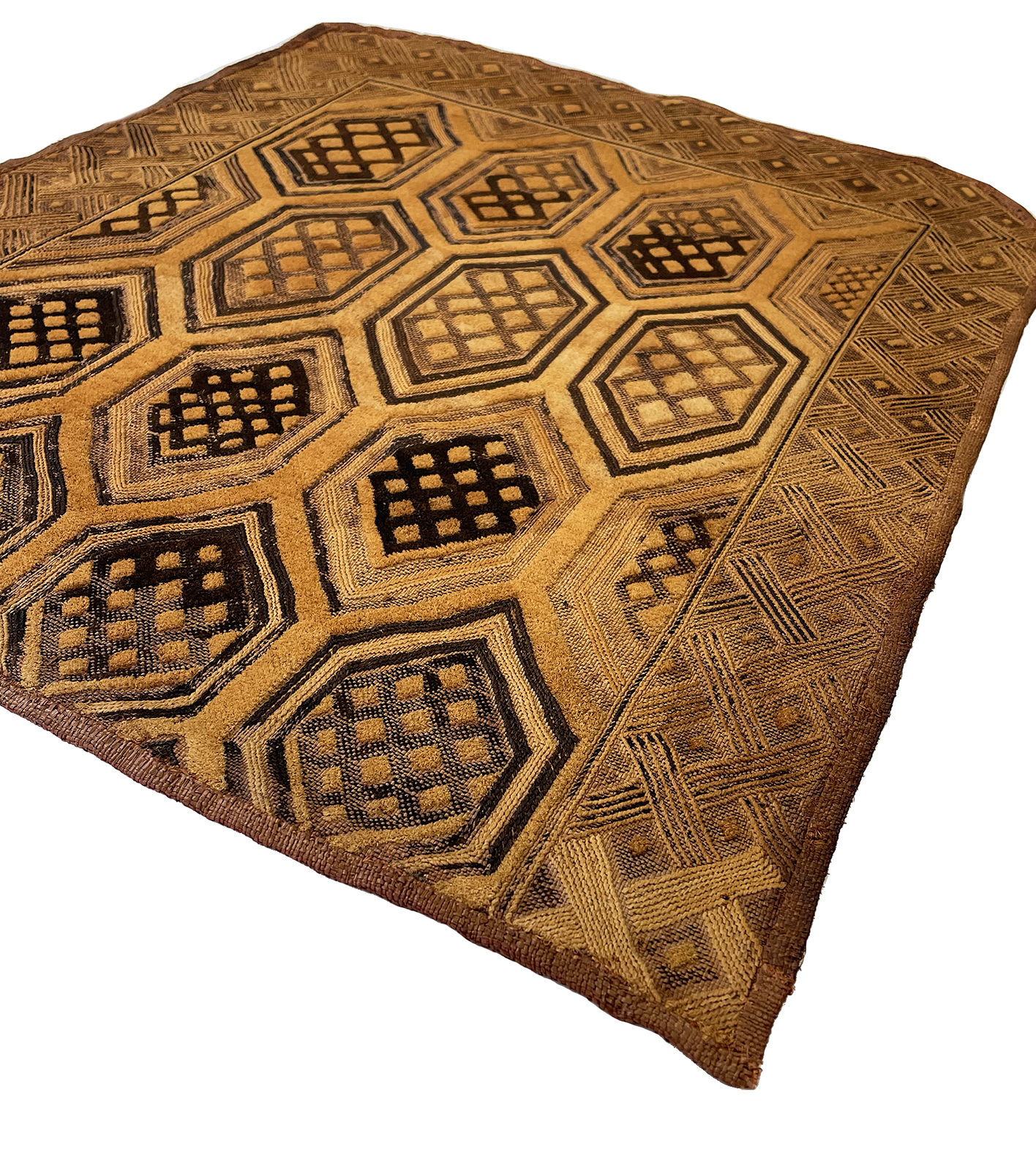Panel from a Woman’s Ceremonial Overskirt
D.R.Congo, Kuba Shoowa people
Late 19th century
Raffia, natural dyes, cut pile embroidery
68 x 56 cm
From an old Belgian collection
The connection between two dimensional carving on Kuba wood prestige objects and the low relief, sculptural quality of cut-pile embroidered cloth (the so-called Kuba velvets) is illustrated by this early panel from a Shoowa woman’s funerary or ceremonial overskirt, which is presented here in conjunction with a lidded container for the vivid red tukula or twool redwood powder or pigment. Both the texile and the tukula container are patterned with a classic honeycomb design that is named iyul (tortoise) in the Bushong lexicon. The difference, of course, is that one is the work of a male carver, while the cloth was embroidered by a woman. The two pieces demonstrate the unity of the Kuba aesthetic across many media.
This panel from a 19th century overskirt is a masterpiece of the art form. During that era, the dazzling flights of visual improvisation for which the Shoowa aesthetic is renowned are constrained by the more conservative conventions of earlier embroidery traditions. But there are hints of what is to come in the fractal scaling and compression of the interlace design inset in the center of each motif. The concentric hexagon, worked in a richly, aged golden raffia pile is the perfect form to achieve a tactile dimensional surface. Even the effects of time, which have eroded areas of black pile to leave a ghostly purple imprint of the design, contribute to this effect. While this represents one half of the typical two-panel overskirt, the composition has a pleasing sense of wholeness and integrity, due to the way the design mosaic was completed along the lower edge and framed by the arch of the outer border.
Price on request











